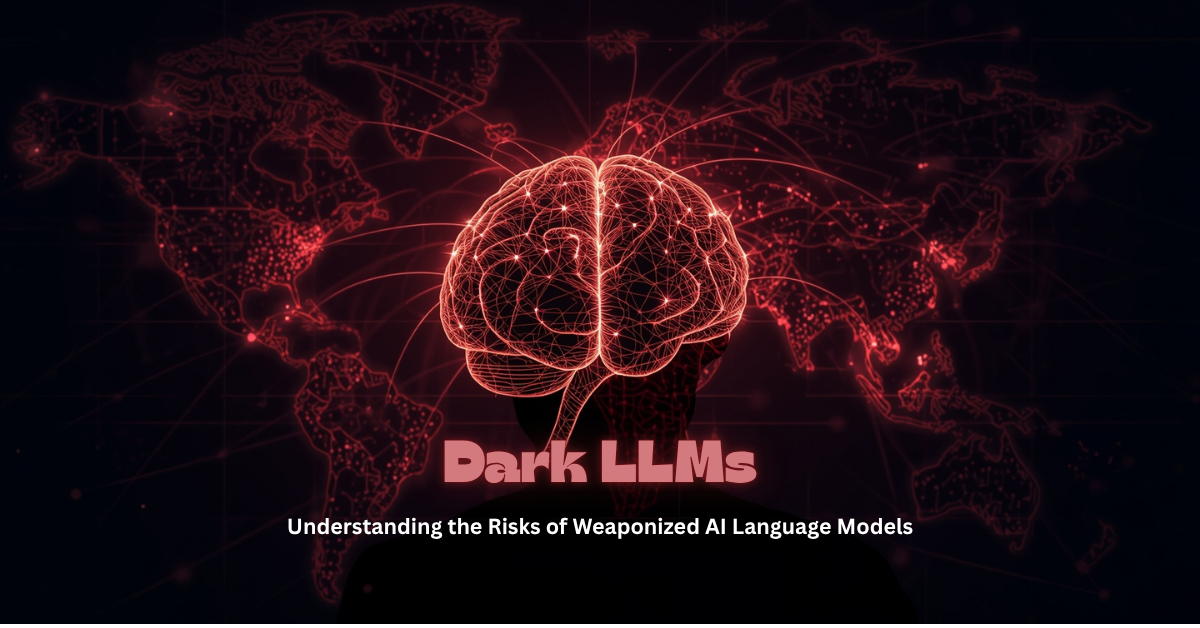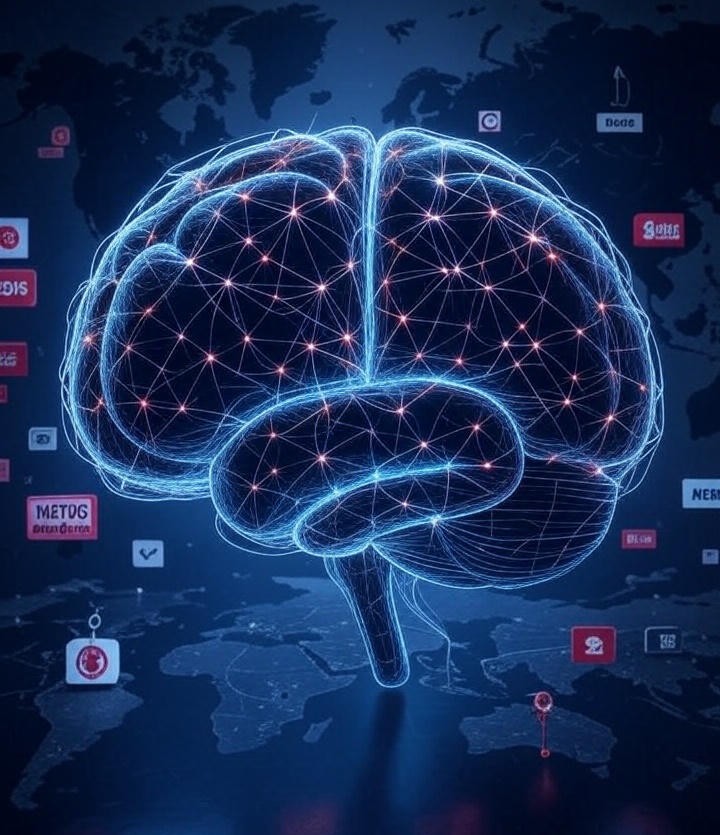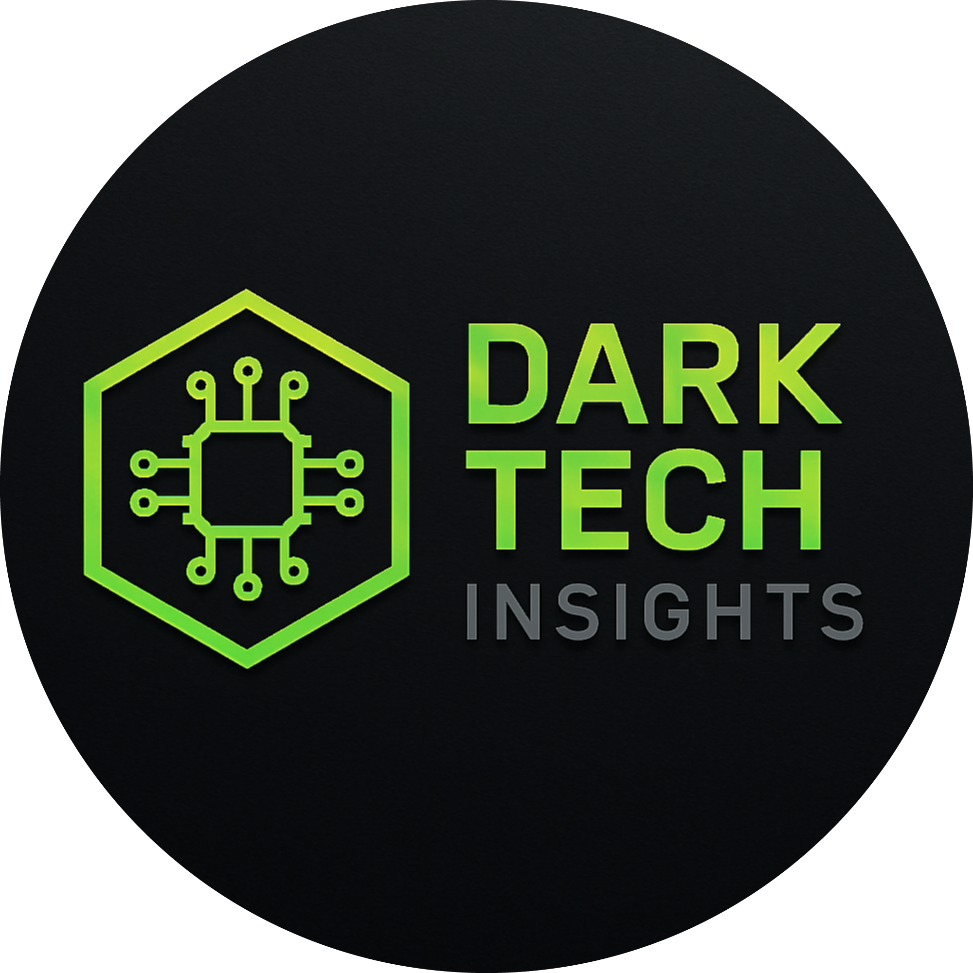Dark LLMs and the Risks of Weaponized AI Language Models

Table of Contents
1. Introduction: What Are Dark LLMs and Why They Matter
Large Language Models (LLMs) like GPT-4 have transformed how we interact with AI, enabling everything from writing assistance to coding help. However, not all LLMs are used for good — “Dark LLMs” refer to language models manipulated or trained with malicious intent to generate harmful, misleading, or deceptive content. These weaponized AIs have become a growing concern in 2025, as they can amplify misinformation, facilitate fraud, and enable sophisticated cyberattacks at an unprecedented scale.
Understanding the nature of Dark LLMs is crucial for developers, security teams, and policymakers to mitigate the emerging risks and safeguard digital ecosystems.

2. How AI Language Models Get Weaponized
Dark LLMs are not inherently malicious; rather, their power lies in how they’re manipulated. Through techniques like prompt engineering and fine-tuning on biased or harmful datasets, these models can be coerced into generating disinformation, phishing content, or even automated social engineering scripts. Cybercriminals exploit these abilities to scale attacks and craft convincing fake narratives that are difficult to distinguish from genuine communication.
Additionally, adversarial attacks—where inputs are deliberately designed to confuse or mislead AI—can cause these models to produce undesired or dangerous outputs. This weaponization amplifies the risk of misuse, turning powerful AI tools into vectors for cybercrime, manipulation, and misinformation campaigns.
3. Real-World Impacts of Weaponized Dark LLMs
The weaponization of AI language models has already started to manifest in serious real-world consequences, affecting individuals, organizations, and even entire societies. One of the most alarming impacts is the proliferation of misinformation and disinformation campaigns. Dark LLMs can generate highly persuasive fake news articles, deepfake scripts, and misleading social media posts at scale, making it easier than ever for malicious actors to manipulate public opinion, sway elections, or incite social unrest.
Beyond misinformation, Dark LLMs are increasingly being exploited in cybercrime and fraud. Attackers use AI-generated phishing emails and social engineering scripts tailored to target specific individuals or organizations. These AI-crafted messages are more convincing and harder to detect than traditional spam, significantly increasing the success rate of attacks. For example, a financial institution might receive seemingly authentic emails requesting sensitive information or initiating fraudulent transactions, all generated by AI with near-human fluency.
Moreover, AI-driven language models facilitate automated scam bots and fake customer service agents that can impersonate trusted entities and deceive victims in real time. These bots operate 24/7, continuously refining their tactics using machine learning feedback loops, making them highly adaptive and difficult to combat.
The societal risks are also profound. Weaponized AI can exacerbate polarization and distrust by flooding digital channels with contradictory narratives, confusing users, and eroding trust in legitimate information sources. Governments and private sectors are scrambling to devise regulations and technological countermeasures to address these threats, but the rapid evolution of Dark LLMs presents a persistent challenge.

4. Detection and Defense Strategies Against Dark LLMs
As the threat of weaponized AI language models grows, cybersecurity professionals and researchers are racing to develop effective detection and defense mechanisms. One major challenge is that Dark LLM-generated content can closely mimic human language, making it difficult for traditional filters and spam detectors to identify malicious outputs reliably.
AI-Powered Detection Tools
To counter this, innovative AI-powered detection tools are being developed. These systems use machine learning algorithms trained to recognize subtle linguistic patterns and anomalies typical of AI-generated text. For example, they analyze inconsistencies in syntax, unnatural repetition, or statistical signatures left by specific models. Companies like OpenAI and other cybersecurity firms are actively researching watermarking techniques to embed invisible “signatures” into AI outputs, which help verify the authenticity and source of content.
Behavioral Analytics and Network Monitoring
Another defense layer involves monitoring user and network behavior to detect suspicious activities. For instance, automated social engineering attacks may display unusual communication patterns or rapid message sending that can be flagged by anomaly detection systems. Combining these analytics with AI detection improves accuracy and reduces false positives.
Human-in-the-Loop Verification
Despite advances, human expertise remains vital. Security teams increasingly use hybrid approaches that combine automated detection with manual review, ensuring nuanced judgment in evaluating potential threats. Training personnel to recognize AI-crafted deception is becoming an essential part of cybersecurity awareness programs.
Collaboration and Information Sharing
Given the evolving nature of AI threats, cross-industry collaboration and information sharing between governments, private sectors, and academia are critical. Platforms like threat intelligence sharing networks help organizations stay updated on emerging attack vectors and coordinate responses effectively.
Regulatory and Ethical Efforts
In parallel, policymakers are working on regulations to ensure responsible AI use, promote transparency, and impose penalties for malicious deployment of AI technologies. Ethical guidelines for AI developers emphasize building safeguards into models to prevent misuse from the ground up.

5. Ethical and Regulatory Challenges Surrounding Dark LLMs
As weaponized AI language models become more prevalent, the ethical and regulatory landscapes must evolve rapidly to address new risks and responsibilities. Unlike traditional software tools, AI models that generate language can directly influence human thought, opinion, and behavior at scale, raising complex moral questions.
Accountability and Transparency
One of the core ethical challenges is determining who is responsible when AI-generated content causes harm. Developers, deployers, and even users may share liability, but current laws often lag behind technology. Transparency in AI operations, including clear documentation of data sources and model behaviors, is essential for accountability. Some experts advocate for mandatory disclosures when AI-generated content is used, helping audiences distinguish between human and machine-produced material.
Bias and Fairness
Dark LLMs often arise when models are fine-tuned or prompted in ways that exploit biases or stereotypes present in training data. This can amplify harmful narratives and discriminatory content unintentionally or deliberately. Ethical AI development requires ongoing efforts to identify, mitigate, and correct such biases, promoting fairness and inclusivity.
Privacy Concerns
Since LLMs learn from vast datasets, including publicly available text, questions arise about privacy and consent. Weaponized AI can misuse personal data or generate content that infringes on individuals’ privacy, such as deepfake scripts or targeted harassment. Stronger data governance and privacy-preserving AI techniques are vital to mitigate these risks.
Regulatory Frameworks
Globally, governments are beginning to craft regulations specifically targeting AI’s misuse. Proposals include restricting the use of AI for generating misinformation, requiring AI content watermarks, and enforcing robust cybersecurity standards. However, the challenge lies in balancing innovation with protection—overly strict laws may stifle beneficial AI applications, while lax regulations enable abuse.
Ethical AI Development Practices
Leading AI organizations are adopting ethical guidelines and principles emphasizing human-centered design, risk assessment, and proactive misuse prevention. These practices encourage developers to consider the societal impact of their models from inception to deployment.
6. Future Outlook: Combating the Weaponization of AI Language Models
The rapid advancement of AI technology promises incredible benefits, but also demands a proactive approach to mitigate its misuse. The future of combating weaponized Dark LLMs will depend on several critical developments:
Advances in AI Safety Research
Ongoing research in AI safety aims to build models that are robust against manipulation and misuse. Techniques such as reinforcement learning from human feedback (RLHF), adversarial training, and AI alignment are improving the ability to guide AI behavior toward safe, ethical outputs.
Collaborative Industry Efforts
Tech companies, governments, and academia are increasingly collaborating to develop standards and share intelligence on emerging threats. Industry-wide frameworks for responsible AI deployment and transparent reporting will be key to staying ahead of malicious actors.
Improved User Awareness and AI Literacy
Empowering end-users with education about AI capabilities and risks helps build societal resilience. Programs focused on AI literacy teach users to critically evaluate content, recognize AI-generated misinformation, and report suspicious activity.
Integration with Broader AI Ecosystems
Weaponized LLMs are unlikely to act in isolation. The future will see interconnected AI agents coordinating complex attacks or defenses. Developing holistic security architectures that address multi-agent AI behavior will be a priority.
Regulatory Evolution
Governments will continue to refine policies balancing innovation and safety. International cooperation is essential to address cross-border AI threats and enforce compliance globally.
7. Practical Tips: How Organizations Can Protect Against Dark LLM Threats Today
While the battle against Dark LLM weaponization is complex, organizations can take practical steps now to reduce risks:
- Implement AI Detection Tools: Use advanced AI-powered content analysis tools to flag suspicious text and automate threat monitoring.
- Strengthen Cyber Hygiene: Educate employees on AI-driven phishing and social engineering tactics; enforce strict verification protocols.
- Adopt Multi-Factor Authentication (MFA): Prevent unauthorized access that AI attackers might exploit to deepen intrusion.
- Collaborate with Threat Intelligence Networks: Share AI-related threat data with trusted partners to stay informed about new attack vectors.
- Review AI Vendor Practices: When integrating AI services, assess the provider’s ethical policies and misuse prevention measures.
- Promote Transparency: Clearly disclose AI-generated content in customer interactions to build trust and avoid confusion.
8. Conclusion: Navigating the Dark Side of AI Language Models
Weaponized Dark LLMs represent one of the most pressing challenges in cybersecurity and AI ethics today. Their ability to produce deceptive, scalable, and adaptive content threatens trust, security, and societal cohesion. While these risks are real and evolving, so too are the tools, policies, and collaborative efforts designed to counter them.
The key to navigating this dark frontier lies in a balanced approach: embracing the innovation AI offers while rigorously managing its misuse. By staying informed, investing in AI literacy, and fostering responsible AI development, organizations and individuals can help ensure that the power of language models serves humanity’s best interests rather than undermining them.
Stay vigilant, experiment with defense strategies, and join the global movement to make AI safe, transparent, and trustworthy.
Q1: How do cybercriminals weaponize AI language models?
A: They use techniques like prompt engineering, fine-tuning on harmful datasets, and adversarial attacks to make AI generate deceptive, harmful, or manipulative content at scale.
Q2: Are AI-generated phishing emails harder to detect?
A: Yes, because AI can produce highly convincing and contextually relevant messages that mimic human writing, making phishing attempts more sophisticated and difficult to spot.
Q3: What tools exist to detect AI-generated malicious content?
A: Emerging AI-powered detection tools analyze linguistic patterns, watermarking, and behavioral anomalies to identify suspicious AI-generated text, though no method is foolproof yet.
Q4: Can regulation stop the misuse of AI language models?
A: Regulation can help by setting ethical standards and enforcing transparency, but technological and collaborative efforts must work alongside legal measures to be effective.
Q5: How can organizations protect themselves from weaponized AI threats?
A: By implementing AI detection tools, educating staff on AI-driven scams, using strong cybersecurity practices like MFA, and participating in threat intelligence sharing networks.
